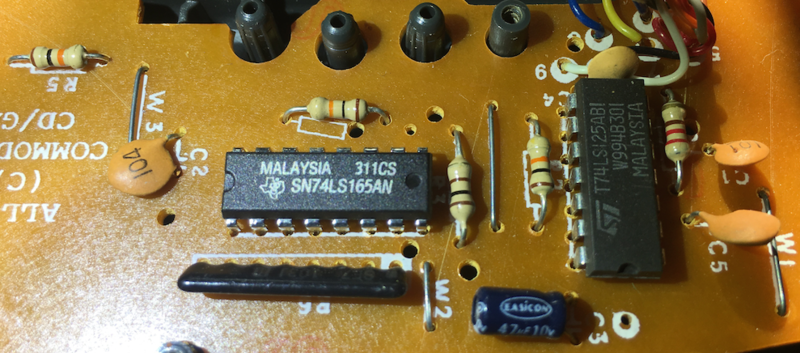Hi Guys

I’ve reproduced this circuit schematic:
http://gerdkautzmann.de/cd32gamepad/a100schematic.pngAt first I assumed the schematic had an error, because the physical hardware has
a 220R resistor (rightmost in the photo), rather than the 2K2 resistor at the bottom of the schematic.
The buffer around it are tri-state buffers, and the 2K2 ? resistor holds the outputs
normally low if the buffers are switched high impedance between their inputs & outputs.
Now it seems to me the 220R value is harsh for a pulldown resistor.
If the outputs became high, the 220R seems a bit close to short to be in the logic circuit.
Am I correct in my thinking, and it should be 2K2 ?
